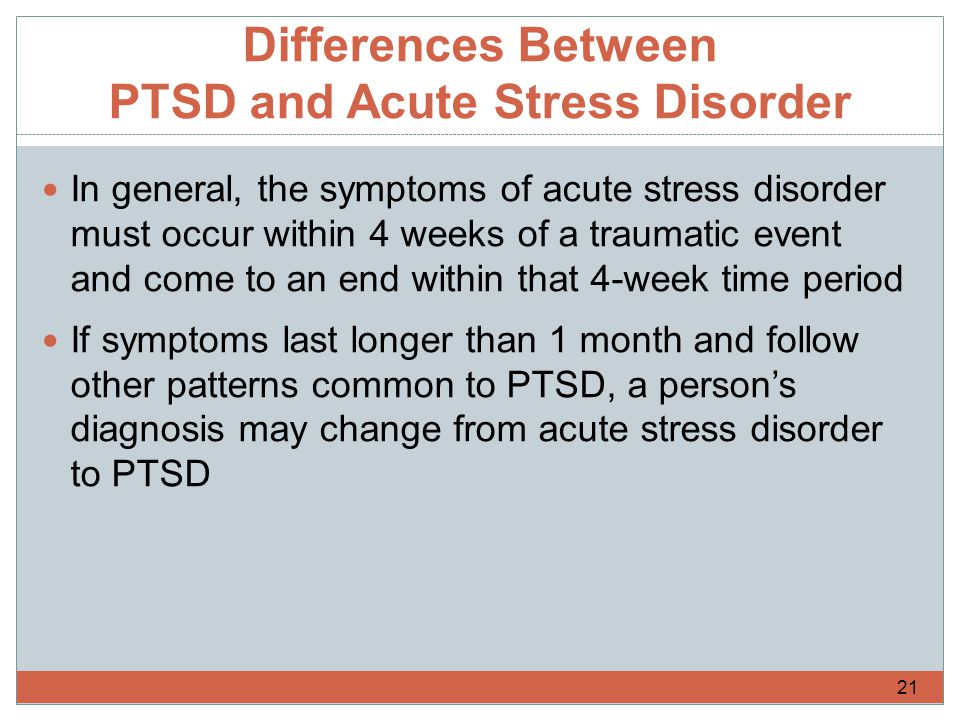
I'd say many of us are familiar with PTSD and its corresponding symptoms. However, are you also familiar with Acute Stress Disorder? As negotiators and practitioners from other related fields (like crisis counselors), we are not involved in the crisis to diagnose someone.
Why? It's not our job.
Plus, for example we, as the communication specialists on the scene, are not going to try and determine if the certain symptoms are present in the subject for a specific time frame such as more than a month (required by the way for PTSD to be diagnosed) as that can come across as awkward and ruin the rapport-building approach.
What is important is to know the signs and symptoms in order to develop an effective communication strategy.
Therefore, I suggest get to know a little bit more about what Acute Stress Disorder is (from Health Line):
In the weeks after a traumatic event, you may develop an anxiety disorder called acute stress disorder (ASD). ASD typically occurs within one month of a traumatic event. It lasts at least three days and can persist for up to one month. People with ASD have symptoms similar to those seen in post-traumatic stress disorder (PTSD).
The symptoms include dissociative, avoidance, and re-experiencing the traumatic event. It also involves distress and also anxiety or increased arousal. Examples include:
Therefore, I suggest get to know a little bit more about what Acute Stress Disorder is (from Health Line):
In the weeks after a traumatic event, you may develop an anxiety disorder called acute stress disorder (ASD). ASD typically occurs within one month of a traumatic event. It lasts at least three days and can persist for up to one month. People with ASD have symptoms similar to those seen in post-traumatic stress disorder (PTSD).
The symptoms include dissociative, avoidance, and re-experiencing the traumatic event. It also involves distress and also anxiety or increased arousal. Examples include:
- having trouble sleeping
- being irritable
- having difficulty concentrating
- being unable to stop moving or sit still
- being constantly tense or on guard
- becoming startled too easily or at inappropriate times
